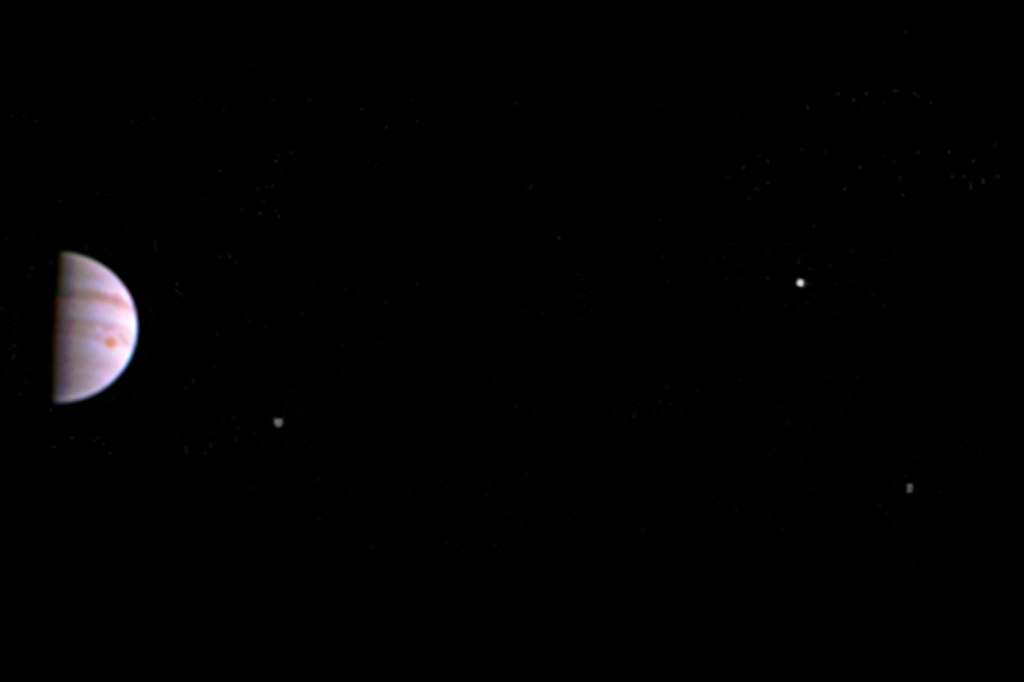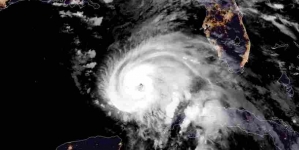-
Tips for becoming a good boxer - November 6, 2020
-
7 expert tips for making your hens night a memorable one - November 6, 2020
-
5 reasons to host your Christmas party on a cruise boat - November 6, 2020
-
What to do when you’re charged with a crime - November 6, 2020
-
Should you get one or multiple dogs? Here’s all you need to know - November 3, 2020
-
A Guide: How to Build Your Very Own Magic Mirror - February 14, 2019
-
Our Top Inspirational Baseball Stars - November 24, 2018
-
Five Tech Tools That Will Help You Turn Your Blog into a Business - November 24, 2018
-
How to Indulge on Vacation without Expanding Your Waist - November 9, 2018
-
5 Strategies for Businesses to Appeal to Today’s Increasingly Mobile-Crazed Customers - November 9, 2018
NASA Releases First Image Taken By Juno In Jupiter’s Orbit
NASA’s Juno mission to Jupiter has sent back its first picture of the planet since going into orbit around it last week.
Advertisement
Aside from being breathtaking, the photo also served as proof that the spacecraft’s JunoCam had survived the journey and its first pass through what NASA described as Jupiter’s “extreme radiation environment”. Now, a safe distance from Jupiter has been attained and the system is slowly coming online, giving NASA its first photo opportunity since it made its own jovian fireworks.
During its mission, Juno will orbit Jupiter 37 times and study the planet with nine science instruments from as little as 2,600 miles – the distance it will reach from the cloud tops on August 27.
Now that the Juno spacecraft is settled in orbit around Jupiter, the real work is about to begin.
The image JunoCam sent back was taken on July 10, when the spacecraft was 4.3 million km from the planet. The Great Red Spot (GRS) is also visible.
During the approach, the camera and instruments were powered off as a precaution as Juno braved the intense radiation.
Yesterday (July 12), the first image from Juno after its unbelievable entry into the planet’s orbit was uploaded.
NASA administrator Charlie Bolden compared Juno’s arrival to the US Independence Day as milestones in America’s history.
To enter Jupiter’s orbit, Juno fired its rocket motor, putting it on a long, looping path that takes 53 days to complete.
Recent reports say that NASA scientists started powering up the scientific equipment aboard Juno to prepare it for data gathering.
“JunoCam will continue to take images as we go around in this first orbit”, said Candy Hansen, Juno co-investigator from the Planetary Science Institute in the US.
The space probe ended a five-year flight to the biggest planet in the solar system on July 4 with a do-or-die breaking maneuver so it could shed speed and fall into Jupiter’s gravity well.
In the next 18 months, the Juno mission will be able to unravel the inner workings of the planet, determining its surface and core.
Juno’s mission is scheduled to come to an in February 2018 and then it would be crashed with Jupiter’s thick atmosphere.
Advertisement
JunoCam is not considered one of the mission’s science instruments.





























